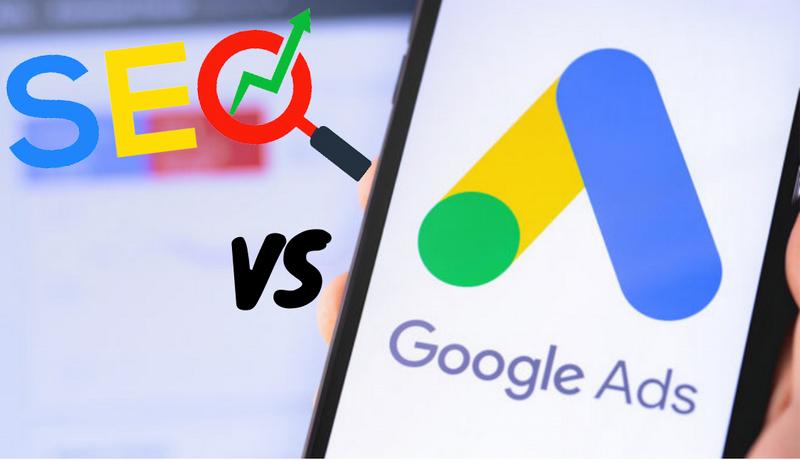Google Ads has become a cornerstone in digital marketing, delivering measurable results and scalable performance for businesses across the globe. By offering precision targeting, cost control, and detailed analytics, Google Ads empowers companies to reach their ideal audience effectively. But beyond the theory, real-world case studies best illustrate how brands have harnessed its power. This article explores several success stories and highlights the key lessons businesses can learn from these experiences to enhance their own campaigns Google reklama.
How a Local Bakery Increased Sales by 300% with Google Ads
A small artisan bakery in Vilnius, Lithuania, struggled with limited foot traffic and stagnant sales. To tackle this, the bakery turned to Google Ads with a modest budget. They focused on local keywords such as “fresh bread near me” and “Vilnius organic bakery.” Their campaign incorporated Google Search Ads with location extensions and a compelling call-to-action: “Warm Bread Baked Daily – 5 Minutes Away.”
Within three months, the bakery experienced a 300% increase in sales. Foot traffic tripled, and website visits surged. Remarkably, over 60% of the new customers mentioned they found the shop via Google search.
Lesson Learned: Even businesses with tight budgets can generate impressive results by targeting local search intent and optimizing for mobile and location-based searches.
How a SaaS Startup Reduced Customer Acquisition Costs by 40%
A European SaaS company offering project management tools faced high customer acquisition costs (CAC) through traditional marketing channels. After launching a Google Ads campaign focused on “project management software for remote teams,” they tested different ad creatives and set up conversion tracking through Google Analytics.
Using Smart Bidding strategies like Target CPA and enhanced ad scheduling, the company optimized its campaigns over a 90-day period. The result was a 40% drop in CAC and a 75% increase in conversion rate. Their return on ad spend (ROAS) improved from 2:1 to nearly 5:1.
Lesson Learned: Google Ads provides advanced tools like Smart Bidding and conversion tracking that allow SaaS companies to scale profitably and reduce waste.
Retail Brand Boosts E-commerce Revenue with Google Shopping
An established fashion retailer in Poland used Google Shopping to promote its new line of sustainable clothing. They integrated their product feed with Google Merchant Center and ran Shopping Ads targeting searchers in the EU who were interested in eco-friendly fashion.
With detailed product images, pricing, and reviews displayed directly on the search page, click-through rates improved significantly. The campaign achieved a 6.5x ROAS within the first two months. The visibility also led to a 35% uptick in branded search terms, indicating increased brand recognition.
Lesson Learned: Google Shopping is highly effective for e-commerce when supported by optimized product feeds, compelling visuals, and competitive pricing.
B2B Manufacturing Company Gains High-Quality Leads with Search Ads
A B2B company manufacturing industrial sensors struggled to reach decision-makers through traditional media. They shifted their focus to Google Ads, using long-tail keywords like “buy temperature sensors for oil refineries” and “industrial-grade wireless sensors.” They combined this with in-depth landing pages that included technical specifications, certifications, and whitepapers.
The campaign generated over 400 qualified leads in six months, with a 19% conversion rate—far higher than industry standards. The leads were nurtured via email marketing and resulted in contracts worth over €500,000.
Lesson Learned: For B2B, combining specific long-tail keywords with rich content and clear CTAs can produce high-quality leads and measurable business outcomes.
Tourism Business Recovers Post-Pandemic Using Google Ads
A family-run travel agency in Croatia faced massive declines during the COVID-19 pandemic. As travel resumed, they launched Google Ads campaigns targeting searches like “private tours in Croatia 2023” and “safe travel packages Europe.”
They used Google Display Network to show visually rich ads to potential tourists browsing travel blogs and YouTube. They also added remarketing audiences to target users who had visited their website but hadn’t booked.
This multichannel strategy helped increase bookings by 180% compared to pre-pandemic levels. The combination of awareness (Display) and intent (Search) proved to be highly effective.
Lesson Learned: Google Ads is not just for selling products—it can also rebuild trust and drive recovery when paired with strong messaging and targeting.
Mobile App Sees Massive Growth via Google App Campaigns
A health-focused mobile app launched in Scandinavia wanted to boost downloads and engagement. They turned to Google App Campaigns, allowing machine learning to handle placements across Google Search, YouTube, Display, and the Play Store.
They set clear goals: cost-per-install (CPI) under €2 and in-app purchases within the first week. The algorithm quickly identified which creatives and placements worked best. In three months, installs grew by 400%, with 25% of users making in-app purchases within seven days.
Lesson Learned: Google App Campaigns leverage automation and cross-channel placement to scale user acquisition quickly and cost-effectively.
Nonprofit Organization Gains Volunteers and Donations
A Lithuanian nonprofit supporting mental health awareness used Google Ads Grants to run free campaigns promoting their helpline and fundraising efforts. They crafted ads around emotional support, volunteer opportunities, and how to donate.
Despite a zero-dollar ad budget, they reached over 100,000 people in six months, recruited dozens of new volunteers, and raised over €20,000 through their donation page.
Lesson Learned: Google Ads Grants offer nonprofits an incredible opportunity to expand reach and impact without spending their own resources.
Lessons That Apply Across Industries
While the case studies span various sectors, there are universal takeaways that every advertiser can benefit from:
1. Define Clear Objectives
Whether it’s sales, leads, app installs, or brand awareness, setting precise goals helps Google Ads optimize efficiently.
2. Invest in Keyword Research
Successful campaigns are rooted in understanding what your audience is searching for. Use Google’s Keyword Planner and align ad copy to user intent.
3. Track Everything
Implement conversion tracking with Google Analytics or Google Tag Manager. Without data, optimization is guesswork.
4. Use Automation Wisely
Smart Bidding, responsive ads, and performance max campaigns save time and deliver better results when configured properly.
5. Don’t Ignore Creatives
Compelling visuals and strong CTAs are essential, especially on Google Display and Shopping.
6. Continuous Testing and Optimization
A/B test headlines, ad extensions, landing pages, and bids. Iteration is key to long-term success.
Conclusion
Google Ads is a versatile and powerful advertising platform that can drive tangible results across industries—from local bakeries to SaaS startups, retailers, nonprofits, and travel agencies. These real-world case studies prove that with smart strategy, continuous testing, and a deep understanding of your audience, any business can succeed. By applying the lessons learned from these examples, advertisers can craft more effective, ROI-focused campaigns that deliver long-term growth.
2/2

